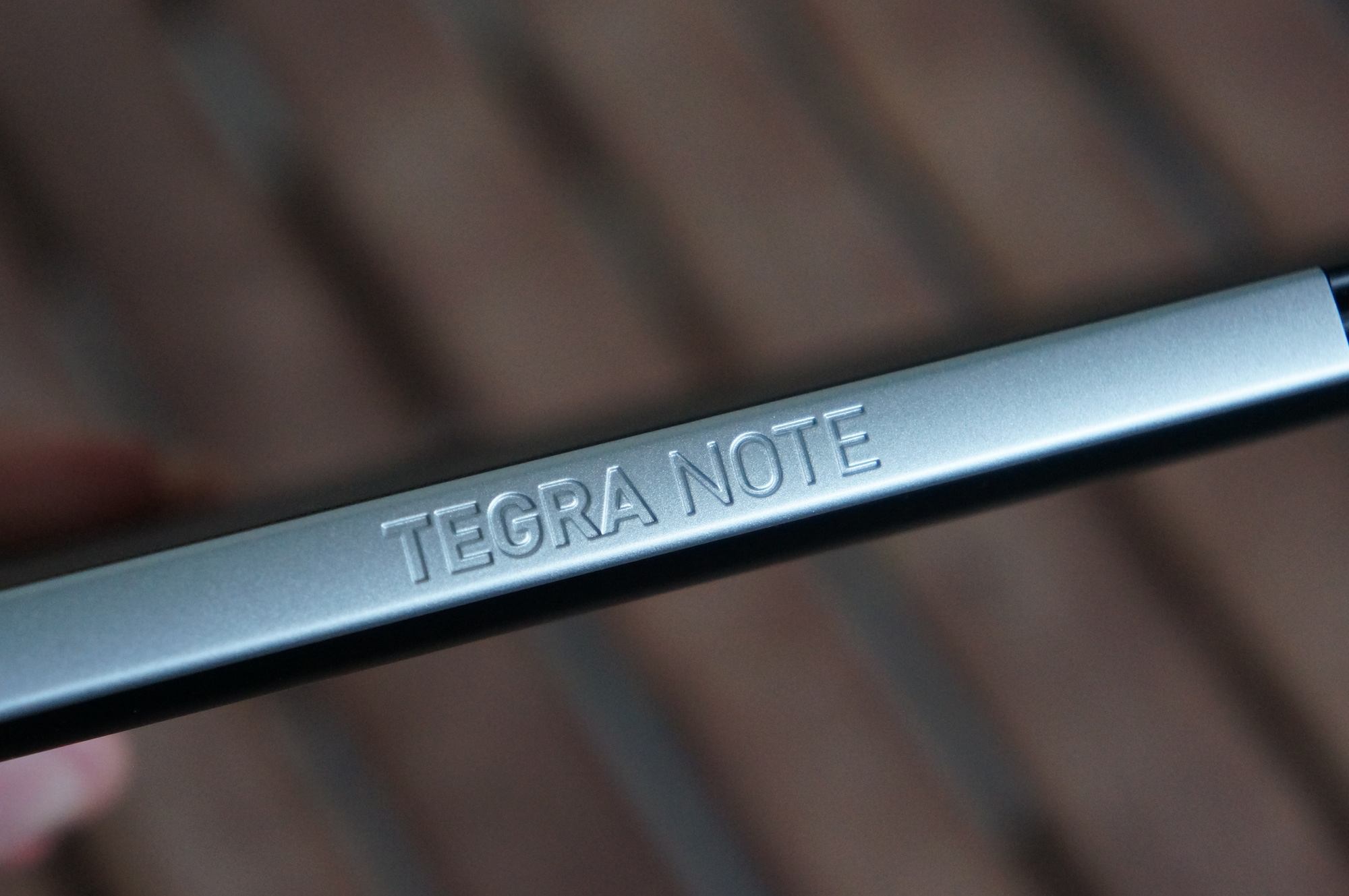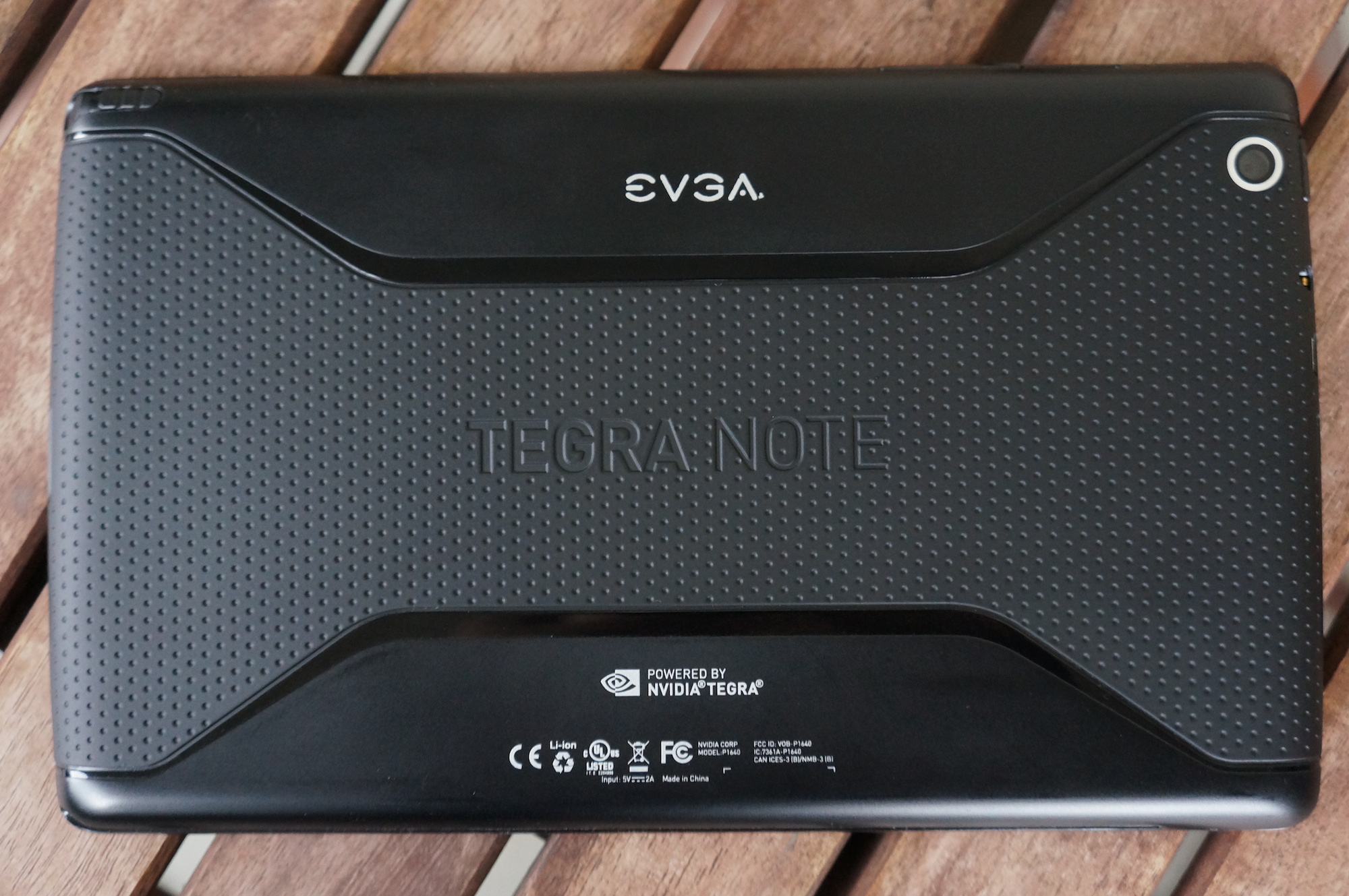EVGA Tegra Note 7 Review: Nvidia's Tegra 4 For $200
Nvidia is partnering with EVGA on the company's second Tegra 4-based device. Its Tegra Note 7 sells for $200, sports unique stylus technology, and ships with a bloatware-free build of Android. Can it set a new standard for affordable seven-inch tablets?
Nvidia Tegra Note 7: A $200 Tegra 4-Based Tablet
Most of the Nvidia products we benchmark end up landing in our PCs. But as we all know, the company is also heavily invested in mobile technology with its Tegra SoCs and i500 4G LTE modem. Just this year, we've seen Nvidia get more involved in the design of mobile devices as it pushes to move hardware based on Tegra 4.
Our first encounter with the SoC, code-named Wayne, was in the Shield console (Nvidia Shield Review: Tegra 4-Powered Handheld Gaming). Nvidia's engineers enjoyed a bit of flexibility with that device due to its form factor. Weight wasn't a huge problem, since most folks want gaming controllers that feel sturdy in their hands. Consequently, battery capacity could be plenty generous. And the thick body made more than enough room for active cooling, too.
But for all of its strengths, including PC game streaming, an entertainment-oriented device is always going to be niche. If Nvidia wanted Tegra 4 to show more prominently in the mainstream, the company needed victories in the tablet space. Microsoft's Surface 2 was no doubt a major win on that front. However, after its experience with Shield and few other third-party implementations, we were not surprised when Nvidia revealed its plan for a tablet platform called the Tegra Note back in September.
Nvidia turned to its OEM partners for branding and distribution. In North America, the tablet is sold by EVGA and PNY Technologies. Globally, Oysters and Zotac will offer the tablet in Europe; Colorful, Shenzhen Homecare Technology, and Zotac in Asia-Pacific; and XOLO in India.
| Tegra Note 7 | |
|---|---|
| SoC | Tegra 4 |
| CPU Complex | Quad-core Cortex-A15 with fifth battery-saver Cortex-A15, up to 1.8 GHz |
| GPU Complex | 72-core (24 vertex shaders and 48 pixel shaders) |
| Memory | 1 GB DDR3L-1600 |
| Display | 7" IPS LCD with LED Backlight, 1280x800 |
| Camera | 5 MP AF HDR RearVGA Front |
| Storage | 16 GB eMMCmicroSD Slot (Up to 32 GB) |
| Audio | Front-Facing Stereo Speakers |
| Touch | 10-Point Capacitive with Included Chisel-Tip Stylus |
| Wi-Fi | 802.11b/g/n, Bluetooth 4.0 LE, GPS |
| Sensors | Nine-Axis (Gyro, Accelerometer, Compass)Ambient Light Sensor |
| I/O | HDMI with Ultra HD SupportUSB 2.03.5 mm Analog Audio OutputFront Microphone |
| Battery | 4100 mAh |
| Dimensions | 190 x 120 x 9.4 mm, 320 g |
Of course, this isn't the Tegra family's first mainstream tablet appearance. Last generation's Tegra 3 was at the heart of Google's Nexus 7, built by Asus. "About a year ago, we announced Project KAI—a Tegra 3 reference design intended as a recipe to build low-cost, high-quality Tegra 3 tablets. Google’s Nexus 7 was one," said Nvidia's Matt Wuebbling. "Tegra Note takes this to the next level by delivering a complete platform, not just the hardware."
Today we're getting our first look at the Tegra Note tablet, manufactured by EVGA. It features the same Tegra 4 SoC found in Shield, running at a slightly lower maximum clock rate (up to 1.8 GHz) compared to Shield's 1.9 GHz ceiling. Given a more confining form factor and passive cooling, this pared-back frequency makes sense.
Deep Dive
Get Tom's Hardware's best news and in-depth reviews, straight to your inbox.
For more information about the Tegra 4 SoC's graphics component, check out Nvidia's Tegra 4 GPU: Doubling Down On Efficiency.
Shield's physical dimensions gave us a lot to talk about. There's a lot less to discuss about the Tegra Note's physical design. That's not to say it's unremarkable. Far from it. Rather, the form factor of any tablet is dictated by its screen size more than anything else. One of our greatest concerns was that Tegra 4 might not translate well to a passively-cooled platform. However, we weren't able to get the device to cut performance in the same dramatic way we've seen other tablets dial back thermals, even after hours of taxing 3D.
EVGA's product box specifically calls this tablet out as the Tegra Note 7, which tells us two things. First, that it features a seven-inch screen. Second, by appending a model number onto the name, there's room for additional devices in the company's line-up. Case in point: we first saw a Nexus 7, and later came a larger Nexus 10.
The seven-inch LCD has a resolution of 1280x800 (216 PPI), which is a bit behind the curve in pixel density compared to the likes of other new similarly-sized tablets. In comparison, the Nexus 7 (2013) has a 1920x1200 screen (323 PPI), as does the Kindle Fire HDX. With that said, the Tegra Note 7's $200 price point currently undercuts the above mentioned alternatives.
Current page: Nvidia Tegra Note 7: A $200 Tegra 4-Based Tablet
Next Page Almost-Stock Android And Some Unique Settings-
DelightfulDucklings Performance wise it is very good for the price seemingly but I just hate the design, to me it just looks plain uglyReply -
JD88 Front facing speakers are really nice. One of the very few complaints I have about my Nexus 7 is volume.Reply
This thing is a powerhouse for the money. -
ananke No 1080p, no sales. Otherwise great device, and good price, but DOA because of the screen. The Chinese knock offs will outsell it.Reply -
TheSchmed I am considering buying this tablet, but I'm weighing it against the less-expensive Dell Venue 7 and 8 (Android, not W8). I hope Tom's will review the Dell tablets and evaluate Intel processor performance and battery life!Reply -
somebodyspecial CF BENCH:Reply
"Sony has been optimising for Snapdragon-based devices since the Xperia range took on the Krait core, and its experience shows as the Xperia Z1 comfortably leads the Tegra Note and Galaxy Note 10.1 in both Managed and Native."
xperia java=32352
Tegra Note7=32648.5
Unless I'm not understanding what is going on here, 32648 is the longer bar/better score right? So while it lost NATIVE, it did not lose Java Managed right? It seems Sony won NATIVE and TEGRA note 7 won Java Managed. You need to fix the text. -
Lessthannil Why does everyone complain about no 1080p? The difference between 1280x800 to 1920X1080p on a 7" screen is minimal while it requires signifigantly more performance and power. Also, its a $199 tablet, what where you expecting?Reply -
JeanLuc While benchmarking did you check to see if the any of the devices you were testing were boosting the SOC clock rates beyond the advertised clock speeds in certain benchmarks? Anandtech looked at this issue a while ago, it would be good to see publications like Toms testing for this sorting of thing and name and shame culprits.Reply -
somebodyspecial Shows the power of the T4, I just wish they'd put it in something I want. And I agree 1080p min on anything that is above a phone' 5in size. But I also understand some just don't care so really a personally complaint about that. I'll wait for T5 and hope they get it into 1080/1200p on 13in or 20in ;) I have no use for 10 or below after using nexus10. Print etc, stuff is just too dang small. Maybe spoiled by 24in/22in dual monitors. I just can do squat on something that small and enjoy it other than some games and I'm not even sure about that. I hope they make a 7in shield 2 :) (maybe a 10in?...LOL).Reply
Smaller and THINNER (you took how much of my batter for thinner?) are USELESS to me. Give me back that larger and FAT model please, so I can run with more power or longer life (or some combo of both). As soon as I see "THINNER" in any description I just put my wallet back and shake my head :( Did I want thinner 10-15 years ago, yeah...Now that party ended ages ago for me.



